Mosses, Liverworts, and Lichens
Media
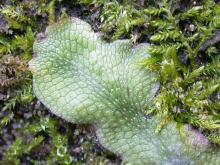
Species Types
Scientific Name
About 112 species in Missouri
Description
Liverworts, along with mosses, make forest floors, streamsides, and spring openings beautiful. They’re fascinating but overlooked.
Media
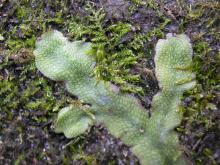
Species Types
Scientific Name
Conocephalum salebrosum (formerly C. conicum)
Description
Snakeskin liverwort looks like large, flattened, irregular, overlapping straps. The surface is covered with polygon-shaped air pores, giving it a bubbly appearance similar to snakeskin. Look for it along streams, springs, and the moist bases of bluffs.
Media
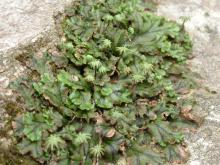
Species Types
Scientific Name
Marchantia polymorpha
Description
Umbrella liverwort is the most famous liverwort in the world. It grows in green ribbons and is very common on the soil of potted plants. It typically forms cuplike gemmae on its upper surface. Its palm-tree-shaped archegona are distinctive, too.
Media
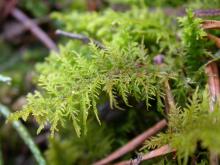
Species Types
Scientific Name
Thuidium spp.
Description
Easy to identify, fern mosses look like tiny ferns. Just like many fern fronds, the branches lie on one plane and become shorter toward the tips. They even lean over like fern fronds.
Media
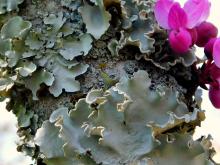
Species Types
Scientific Name
About 436 species in Missouri
Description
A lichen is a composite organism formed by certain fungus species that join with certain algae species. Lichens can be many colors and can be crusty, leaflike, flaky, branching, or mossy. They grow on rocks, trees, or other surfaces.
Media
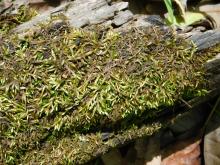
Species Types
Scientific Name
Entodon seductrix
Description
Glossy moss, or shiny or seductive endoton, is a common Missouri moss with broad, glossy leaves that are pressed tightly against the stems. It forms large, dense mats that sometimes cover an entire boulder or log.
Media
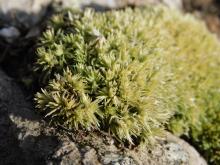
Species Types
Scientific Name
Leucobryum glaucum and Leucobryum albidum
Description
Pincushion mosses, or leucobryum mosses, are whitish green and form pillowlike mounds that may be the size of a pincushion or much larger. Look for them on thin soils of ridges and rock ledges.
Media
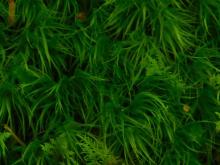
Species Types
Scientific Name
Dicranum spp.
Description
Beautiful components of woodland scenery, our most common broom mosses have glossy, thin, slender-pointed leaves that are quite long and all bend in the same direction, as if being blown by the wind.
Media

Species Types
Scientific Name
Ditrichum pallidum
Description
Golden thread moss forms small, light green or yellowish, rounded, fuzzy-looking hummocks like a cat’s paws. The sporophytes are on remarkably long, slender, yellow, almost translucent stalks.
Media
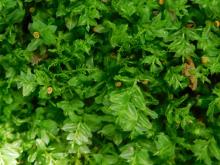
Species Types
Scientific Name
Plagiomnium spp. (formerly Mnium spp.)
Description
Common and easy to recognize, tooth mosses in genus Plagiomnium have several common names. Identify them by their large, oval, transparent, light green, finely toothed leaves that grow on only two sides of the stalk.
See Also
About Mosses, Liverworts, and Lichens in Missouri
Mosses, liverworts, hornworts, and lichens seem rather similar, but these organisms are in very different groups. Mosses, liverworts, and hornworts are small, low plants usually found in damp habitats. Unlike more familiar plants, they lack veinlike structures and do not produce flowers or seeds — instead, they produce spores. Meanwhile, lichens are not plants at all: they are a collection of different fungi that have photosynthetic algae living within their tissues.





















